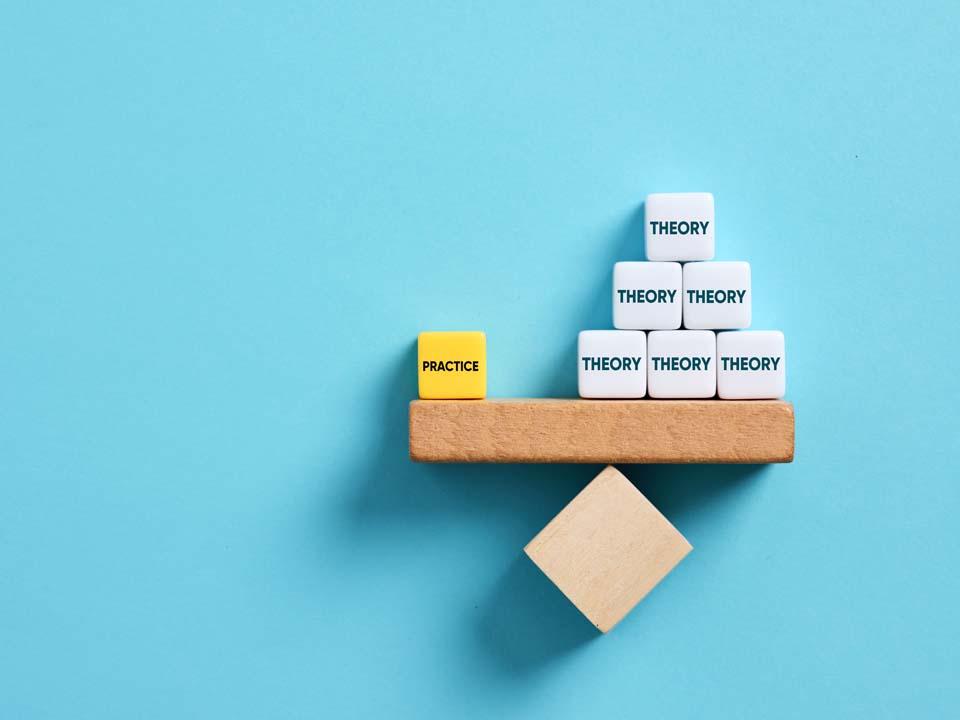At the intersection of learning science and emotional engagement Clark Quinn shares his thoughts on paving the way for transformative experiences in the next era of our economy
In their 2006 book, The Experience Economy, Pine & Gilmore suggested that experiences were the basis of our economy. More interesting, to me, was the claim that the next economy would be the transformation economy. That is, experiences that change us in ways that we want, or need, to be developed. This, I suggest, is what we do! At least, when we’re on our game. I think there are two different ways in which we may not be. Further, there are good resources to address the first, but the second is an area we really can be better at.
Learning Experience Design is where we elegantly integrate learning science with engagement
Learning Experience Design, LXD, is where we elegantly integrate learning science with engagement. That is, we have to do good instruction, but we also have empirical evidence from researchers like Lepper that when learners are engaged, the outcomes are better. Fortunately, there’s a growing awareness of the importance of learning science, with early books like that of Clark & Mayer’s eLearning and the Science of Instruction, now being complemented by excellent tomes from Dirksen, Neelen & Kirschner, and others. Even my next-to-most-recent tome talked about Learning Science for Instructional Designers.
Which leaves us with the other side, engagement – the emotional side of the story, where ‘emotion’ is a shorthand for the elements of creating motivation, keeping anxiety in check, and building confidence. In cognitive science, they recognise conation as a complement to cognition, where conation represents the intention to learn. Learning works better when the learners are committed. This comes from recognising the value of the learning, not being afraid to try, and persisting through to achieve the end result.
In instructional design theory, Keller, with his ARCS model (Attention, Relevance, Confidence, and Satisfaction) is really the only person to address this side of the equation, and we need more. In my most recent tome, Make It Meaningful, I’ve built upon Self-Determination Theory (Deci and Ryan), and combined it with early experience and research on games, complemented by explorations of interface design, fiction, surprise, and more, to develop an understanding that can be reliably applied.
I start by proposing that there are two major elements: the hook, and the landing (leveraging a fishing metaphor, possibly badly as I’m not a fishing person). Each of these has its own elements, though they’re related. Getting these right, and integrated with an effective learning science plan, yields an outcome that can be truly transformative.
The hook
What conation tells us is that people have to commit to the learning experience. I suggest that it takes three elements, that learners have to:
- agree that being able to perform in this new way is of value
- recognise that they don’t already know how
- believe that this experience will change that situation
These are all typically assumed and not specifically addressed, to the detriment of the experience. So, how do we do this?
To start, there has to be real value to the learner. There has to have been sufficient analysis to determine that this is necessary and not yet known. Trying to build engagement for something that doesn’t have a clear benefit to the learner is a wasted exercise. We shouldn’t be building courses that don’t have a clear outcome anyway!
Once there’s clear benefit, you need to make this manifest to the learner. I suggest that an obvious way is to demonstrate the consequences of having this skill, or of not having it. So, we can show the positive consequences possible with this ability, or what can go wrong if it’s not in our skillset. We can do this humorously or dramatically, but showing these outcomes is a clear indication of the rationale for this learning.
An obvious way is to demonstrate the consequences of having this skill, or of not having it
So, for instance, we can show the benefits of knowing how to change a bed with a patient in it, or the consequences of not knowing how to successfully execute a financial transaction on the part of a customer. We match the positive or negative, and dramatic or comedic, to the audience.
There are many situations (though not all) where our learners may already believe they know this. In the case of a sales team, for example, they were overly-confident in their ability to sell trucks. We had to create an evidence-gathering scenario, which they wouldn’t fully explore, and a subsequent feature quiz, which they would consequently do horrid on, before they were ready to listen to the message. If learners believe they know the material, they will have to be dissuaded of the notion before they’re ready to commit.
The last part would be easy, if we had developed trust with our learners on the quality and impact of the experience. Unfortunately, as I have seen way too often, learners will only tolerate, or even actively avoid, most formal learning. I believe that’s largely because we’ve delivered courses that are heavy on information and low on meaningful practice, and we have lost their confidence. We may have to exert considerable effort to rectify the situation until they learn to see that we are prepared to deliver transformation!
The landing
That transformation comes from delivering on the promise the hook proposed. While you want to maintain the motivation you’ve built, you also need to keep anxiety under control. While retention and transfer are our formal learning goals, I’ll suggest that developing sufficient confidence so that learners will apply the learning after the learning experience is also necessary. These, then are the elements that we need to address. I will address one major component that drives both learning outcomes and engagement: practice.
From books like Brown, Roediger, and McDaniel’s Make It Stick, we’ve learned that sufficient practice is a necessity for learning. We also know from books like Ericsson’s Peak that we need appropriate challenge that matches the difficulty to the learner’s current ability. Not coincidentally, what makes for good learning also makes for engagement, as we see from an alignment between Vygotsky’s concept of the Zone of Proximal Development, and Csíkszentmihályi’s explorations of creating an experience of Flow.
The task embedded in those contexts needs to authentically reflect what they’ll need to do after the learning experience
Several factors come together to design compelling experiences. The setting has to be one that learners viscerally understand are situations like they’ll face, even if they’re set in fantastic environments (medieval, western, outer space, etc.). Also, the task embedded in those contexts needs to authentically reflect what they’ll need to do after the learning experience. The level of additional material needs to be minimal, merely enough to convey the context, without overloading their cognitive resources. We also need the consequences and the feedback that reinforces the right answer and explains why wrong answers are understandable but inappropriate.
In addition, we need the right suite of practice. We need a path of practice that gradually builds in challenge level, is spaced out over time, and is varied. Further, we need the practice to be across sufficient contexts to support appropriate transfer.
Then we need the minimal content to support success on the practice. This, cognitively, consists of models and examples. Models explain how the world works in this domain, providing a basis for choosing a course of action based upon the outcomes of this decision or that. Examples illustrate those models in context. Adding in engagement, those examples should be compelling stories. We should also show learner progress, building confidence and indicating where they are in the process.
We’ll also want a closing that concludes the experience that the introductory hook opened up. We want to acknowledge effort, celebrate accomplishments, and point to deeper and further directions. We may drill back up from the current context to the bigger picture, which Reigeluth’s Elaboration Theory tells us we should do the reverse of to begin the experience.
There’s more. You have to ensure that the learning isn’t extinguished, for one. Supervisors or managers, reward policies, and so on, can interfere with the outcomes of a successful transformation. You can’t get sales teams to do solution selling if you’re still rewarding the number of widgets sold, and managers’ “that’s not how we do it here” attitude can effectively squelch even the best-designed interventions. Dirksen’s new book, Talk to the Elephant, elegantly addresses those issues.
Completing the picture
To fully deliver on the experience, you need to understand the detailed implications for the elements indicated above. In addition, you need to modify design processes to systematically develop the necessary information and then design appropriate solutions to be developed. It takes time to change the way you do things, but start with the smallest efforts that have the largest impact, focusing on a resonant hook and meaningful practice.
What we’re really seeing, above, is an integration of learning science with engagement. They have to complement each other, because they can also be in conflict; e.g. gratuitous details distracting from the focus and overwhelming available resources, as we see from Sweller’s Cognitive Load Theory. Comprehending and applying engagement provides the necessary complement to learning science to create learning that is truly transformational. Which is where we can, and should, be.
Clark Quinn is Executive Director and Quinnovation
Related content:
- How to bring UX principles into your learning design
- Improve learning by brain optimisation
- Designing a modern learning experience
References
Brown, P.C., Roediger III, H.L., & McDaniel, M.A. (2014). Make It Stick: The Science of Successful Learning. Boston: Harvard University Press.
Clark, R.C. & Mayer, R.E. (2011). e-Learning and the Science of Instruction (3rd Edition). San Francisco: Pfeiffer.
Csíkszentmihályi, M. (1990). Flow: The Psychology of Optimal Experience. New York, NY: Harper & Row.
Deci, E. L. & Ryan, R. M. (2000). The “What” and “Why” of Goal Pursuits: Human Needs and the Self-Determination of Behavior. Psychological Inquiry, 11 (4).
Dirksen, J. (2015). Design for How People Learn (2nd Edition). New Riders Press: Berkeley, CA.
Dirksen, J. (2023). Talk to the Elephant: Design Learning for Behavior Change. New Riders Press: Berkeley, CA.
Ericsson, A. & Pool, R. (2016). Peak: Secrets From the New Science of Expertise. Boston: Houghton Mifflin Harcourt.
Keller, J. M. (2010). Motivational Design for Learning and Performance: The ARCS model approach. New York: Springer.
Lepper, M.R., & Cordova, D. I. (1992). A Desire to Be Taught: Instructional Consequences of Intrinsic Motivation. Motivation & Emotion, 16, 3, 187-208.
Neelen, M. & Kirschner, P. K. (2020). Evidence-Informed Learning Design. London: Kogan-Page.
Pine, B.J. & Gilmore, J H. (1999).The Experience Economy: Work Is Theatre & Every Business a Stage. Cambridge, MA: Harvard Business School Press.
Quinn, C. (2021). Learning Science for Instructional Designers: From Cognition to Application. Alexandria, VA: ATD Press.
Quinn, C. (2022). Make It Meaningful: Taking Learning Design from Instructional to Transformational. Boston: LDA Press.
Reigeluth, C. & Stein, F. (1983). The elaboration theory of instruction. In C. Reigeluth (ed.), Instructional Design Theories and Models. Hillsdale, NJ: Erlbaum Associates.
Sweller, J. (1988). Cognitive load during problem solving: Effects on learning. Cognitive Science. 12 (2): 257–285.
Vygotsky, L. S. (1978). Mind in Society. Edited by M. Cole, V. John-Steiner, S. Scribner, and E. Souberman. Cambridge, MA: Harvard University Press.




